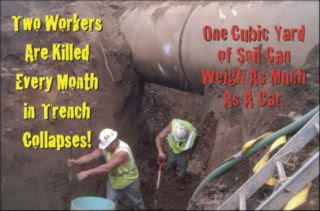U.S. Labor Department’s OSHA Accepting Electronically Submitted Injury, Illness Reports Through December 31
WASHINGTON, DC – The U.S.
Department of Labor’s Occupational Safety and Health
Administration (OSHA) will continue accepting 2016 OSHA Form 300A data
through the Injury Tracking Application (ITA)
until midnight on December 31, 2017. OSHA will not take enforcement action
against those employers who submit their reports after the December 15, 2017,
deadline but before December 31, 2017, final entry date. Starting January 1,
2018, the ITA will no longer accept the 2016 data.
Under the Occupational Safety and Health Act of
1970, employers are responsible for providing safe and healthful workplaces for
their employees. OSHA’s role is to ensure these conditions for America’s
working men and women by setting and enforcing standards, and providing
training, education and assistance. For more information, visit www.osha.gov.
New and Revised Fact Sheets on Silica Now Available
OSHA has released more than a dozen fact sheets
that provide guidance on the respirable crystalline silica
standard for construction. One fact sheet is an overview of the silica standard. The
other fact sheets provide employers with information on how to fully and
properly implement controls, work practices, and if needed, respiratory
protection for each of the 18 tasks listed in Table 1 — Specified Exposure
Control Methods under the standard.
###








